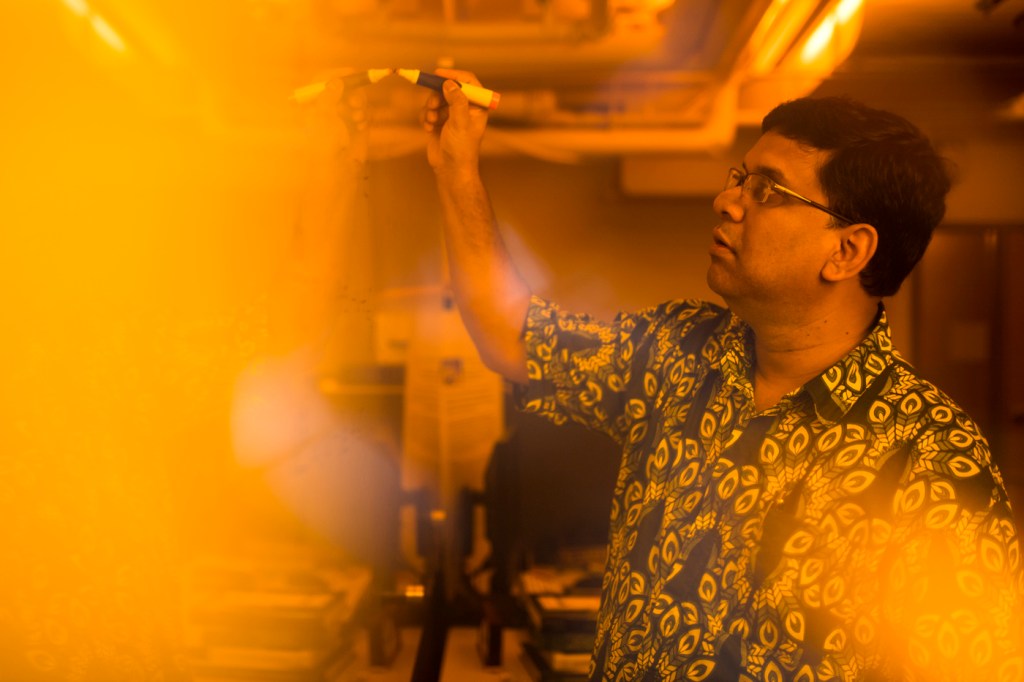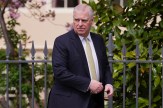Northeastern professor studies latest ozone hole science for UN panel

Auroop Ganguly, professor of civil and environmental engineering at Northeastern University, will spend part of his summer reviewing the latest science on closing the ozone hole at the invitation of the United Nations Environmental Programme.
The quadrennial assessment report on the environmental effects of stratospheric ozone depletion is produced every four years at the stipulation of the Montreal Protocol, the 1987 landmark agreement that regulates ozone-depleting substances on a global basis to protect the earth’s shield against ultraviolet radiation.
The assessments “monitor and report progress made on reducing ozone hole depletion with an emphasis on the interactions with climate variability and change,” he says.
“My contributions will be on the climate impact aspects, specifically the two-way influence of the ozone hole and climate change on each other.”
Ganguly, who has given invited and keynote talks at workshops organized by the U.S. National Academies and the National Science Foundation, is noted for his research in water resources, hydrology and infrastructure resilience as well as non-linear physics.
The 2022 quadrennial assessment report marks the fourth time Ganguly has been invited to join the U.N. Environmental Effects Assessment Panel review. He previously participated in 2010, 2014 and 2018.
Ganguly says he has agreed to review five of eight sections in the assessment, including sections on the response of aquatic ecosystems to the interactive effects of stratospheric ozone depletion, UV radiation and climate change as well as linkages between COVID-19, solar UV radiation and the Montreal Protocol.
The U.N. Environmental Programme calls the 1987 Montreal Protocol on Substances that Deplete the Ozone Layer a “landmark” environmental agreement that regulates nearly 100 man-made chemicals known as ozone-depleting substances or ODS.
Once released to the atmosphere, the chemicals damage the stratospheric ozone layer that protects humans, as well as the environment, from harmful ultraviolet radiation emitted by the sun, the UNEP says.
“The protocol is to date the only U.N. treaty that has been ratified (by) every country on Earth—all 198 U.N. member states,” the UNEP says.
The protocol is working, U.N. experts say.
“The parties to the protocol have phased out 98% of ODS globally, compared to 1990 levels. Because most of these substances are potent greenhouse gasses, the Montreal Protocol is also contributing significantly to the protection of the global climate system,” the UNEP says.
“Without this treaty, ozone depletion would have increased tenfold by 2050 compared to current levels and resulted in millions of additional cases of melanoma, other cancers and eye cataracts,” the UNEP says.
A category of ozone-depleting substances known as chlorofluorocarbons, including refrigerants and aerosol sprays, was at first assumed safe after being introduced in World War II, according to Science for the Public.
One of Ganguly’s graduate school teachers, atmospheric scientist Mario Molina, was among the first to sound the alarm in the 1970s that CFCs threatened to shrink the protective ozone layer.
In 1985, an “extreme depletion of ozone over Antarctica was discovered—the so-called ozone hole,” according to NASA.
Ten years later, Molino and fellow scientists F. Sherwood Rowland and Paul Crutzen were awarded the Nobel Prize in Chemistry for their work predicting the emergence of the ozone hole and the conditions that led to its development.
Ganguly, who will return July 8 from leading a Northeastern study abroad program in Tanzania, has until July 25 to submit his comments as part of the quadrennial assessment review on the continuing effects of ultraviolet radiation on health, ecosystems and materials.
He is scheduled to attend a review meeting in Kalmar, Sweden, in September.
For media inquiries, please contact media@northeastern.edu





